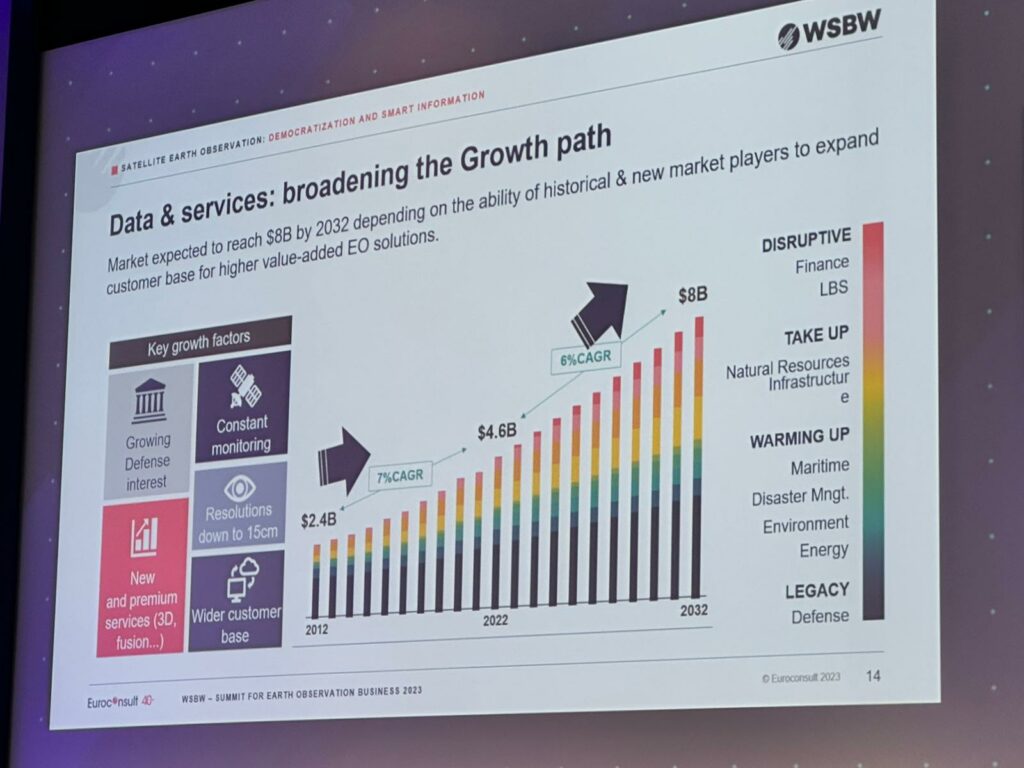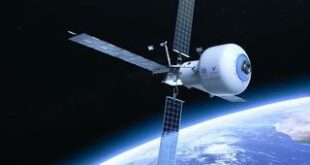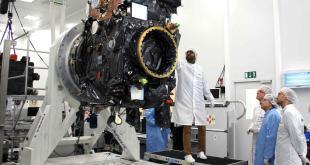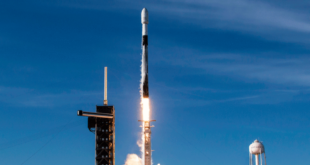By Emma Gatti, Rika Valluri, Louise Weightman

During the World Satellite Business Week 2023 in Paris, players in the Earth Observation (EO) sector gathered together to look to the future. The “Leading EO Businesses Sharing Strategic Views” panel brought forth Brian O’Toole, CEO of Blacksky, Dr. Minda Suchan, VP of Geointelligence at MDA, Eric Even, Head of Sales at Airbus, Jon Love, VP at Maxar, Massimiliano Vitale, SVP Operations at Planet, and Paolo Minciacchi, CEO of e-GEOS to discuss their positioning within in the EOs sector, and how they are approaching various markets.
THE POWER OF REAL TIME INSIGHTS
The general picture suggested sectors such as energy, environment, defence, finance, and natural resource infrastructures as the key areas to insure growth for the entire Eos market (which, accordingly to the recently presented Euroconsult’s Earth Observation Data & Services Market report, is expected to reach $8 billion by the end of 2032). Access to data, satellite data marketplaces, and large-scale availability of images was discussed at length. Both Eric Even and Dr. Minda Suchan echoed the idea that innovation is shifting as space and data become more accessible. Where is shifting though?
Are Earth Observation data from commercial companies solving any novel problem?
The overall consensus across the group was that defence remains the biggest customer for satellite imagery and Earth Observation data. O’Toole, CEO of Blacksky, confirmed that defence and intelligence markets remain their core sector and they will for a long time.
The shifting seems more focused on the type of EOs data collected and the possibilities such new data could open with new markets not traditionally linked with Space. Translated from the commercial rhetoric, this means that the business case lies in the transformation from data into information into useful insights. Thanks to technological advances, machine learning and AI, “We’re moving from Earth Observation for low frequency mapping and intelligence to real-time intelligence” said O’Toole. This is probably not an exaggeration. Ukraine showed us the potential of real-time data.
QUANTITY vs. QUALITY
When it comes to explore new markets, “It is important to understand not only the volume, but the quality of the data will drive the market”, said O’Toole. The concept of premium data that can make the difference applies for example to images with better resolution (15cm), 3D DEM and AR and near-real-time image insights, among the few. The panel also suggested that we should expect an increasing demand for premium and high value information to build technology related to the metaverse. Other expanding sectors will include virtual reality training, smart cities, and insurances.
The challenge here will be to see who the costumers of these data insights will be. Companies like Louis Dreyfus Company (LDC) have started using business information insights from satellite data to aid commodity traders. The finance industry is adapting to use EOs to cope with uncertainty of climate change. With near real-time data, companies can measure parameters such as soil moisture or vegetation growth and transform them into indexes used to make a pre-specified disaster-based pay-out. True commercial potential lies with companies who create useful insights from multiple streams of data (SAR, IN-SAR, Multispectral, Hyperspectral etc.) that solves a challenge for end users economically and efficiently.
Business case lies in the transformation from data into information into useful insights
The panel made it very clear that the Earth Observation sector knows that it needs to move beyond pretty pictures and the heavy rhetoric of the impact of fast processing models and ML. This technology will have to be sectorized based on application and the approach within companies will need to be segregated into three separate categories – Defence, Commercial applications and Socio-Economic sector. Their data processing pipelines will have to start catering to customer specific needs.
WHO HOLDS THE RESPONSIBILITY OF DATA?
However, the question that begs to be asked is – “Are Earth Observation data from commercial companies solving any novel problem, or are these companies shopping around for customers and markets that show interest in these images and adapt them into their pipeline of business information?”. And ultimately, who checks how the data are used? Can the industry legitimately claim to support the Sustainable Development Goals (Space For Climate Action, Responsible Consumption and Production, etc..) if larger co-operations focused on deforestation, fishing, mineral extraction will use EOs data to find even more efficient ways to keep exploiting natural resources?
The EOs commercial sector is such a young industry that several rules of ethical conduct still need to be written. The European Space Agency is the promoter of the Statement for a Responsible Space Sector initiative, a declaration of intent that companies can sign to express their commitment to “contribute to the long-term sustainability of space projects and pave the way to work towards the socially and environmentally responsible management of all activities within the space sector“. Several of the companies on the panel have signed the Statement in the past. However, the Statement is not a binding treaty, nor a contract. It cannot impose penalties in case of breach. It is certainly a positive initiative, but it is more of a philosophical declaration, a sort of Ten Commandments of common sense in Space, rather than a set of rules to be followed. What body is actually checking to whom EOs data producer are selling their data to, and to which extent companies’ revenue comes from environmentally unfriendly projects, it is not specified. The answers probably lie in a deeper and more fruitful dialogue between commercial companies, agencies, governments and international entities such as the UN. We might need to understand how to trace more solid boundaries for a market that indeed has incredible potential for our planet (if we want to see the glass half full), but that sometimes seems to forget all its principles in the name of profit (if we want to see the glass half empty).

Dr. Emma Gatti is a planetary scientist and geologist with a PhD from the University of Cambridge and two post-docs from NASA’s Jet Propulsion Laboratory and Caltech. After returning to Milan in 2018, Dr. Gatti transitioned into the field of Space Economy and Space Policy as a space analyst, leveraging her extensive background in space science to drive inclusion and communication awareness in these areas. In 2022, Dr. Gatti assumed the role of Editor in Chief, writer, and radio host for SpaceWatch.Global, a leading platform dedicated to exploring the latest trends in the Space sector.

Rika Valluri is a graduating senior studying in Bangalore India. She works closely with satellite data and imagery and hopes to work in the geospatial intelligence sector. Rika is also involved with multiple women and gender minority groups in the space sector and is passionate about diversity and inclusion. At SpaceWatch.Global, Rika works on social media and collaborations in Asia.

Louise Weightman is a recent graduate with a Masters in Physics and Space Science from the University of Leicester. After graduating last year she has been involved in the science communication sector, with an emphasis on the space industry. At SpaceWatch.Global Louise is a junior writer and events coordinator.





